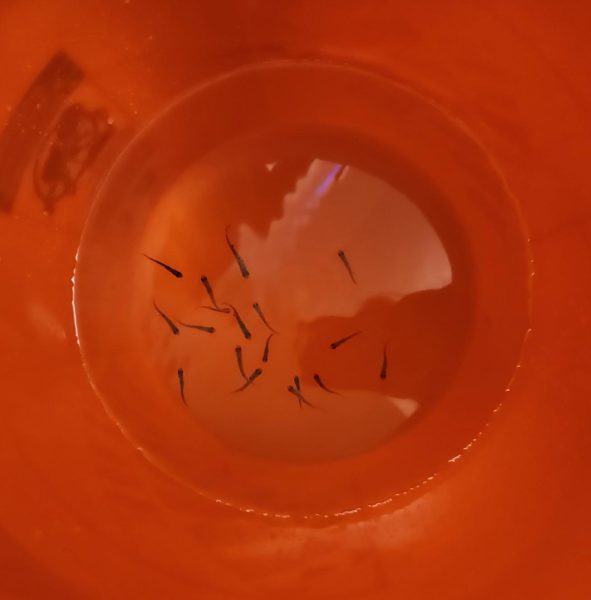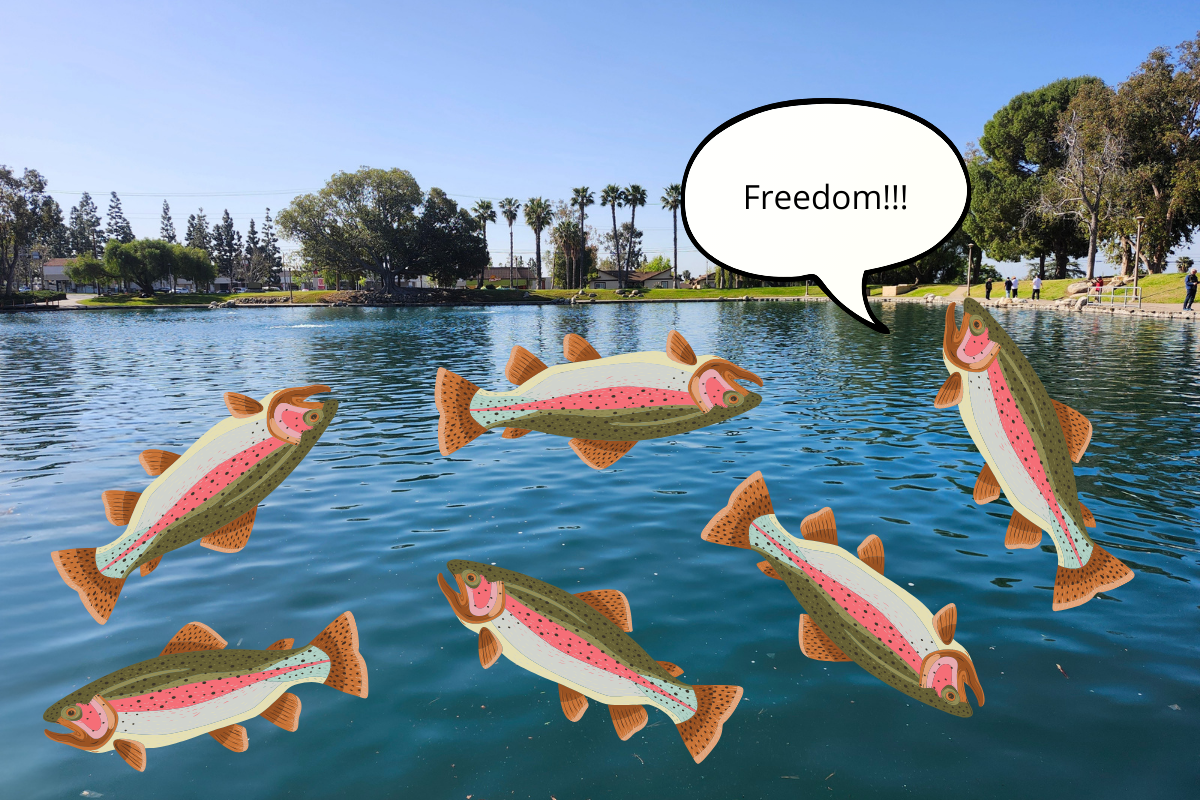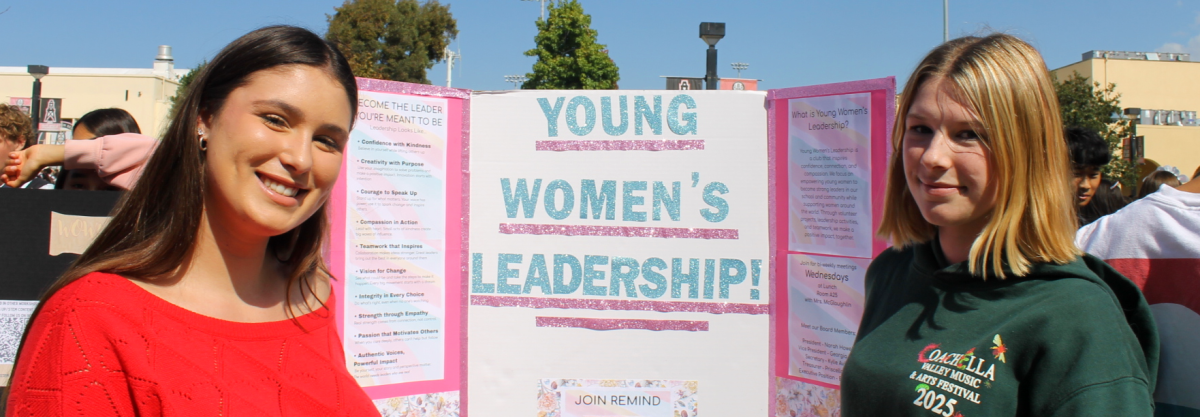The Agricultural Biology (Ag Bio) classes here at Huntington Beach High School raised Rainbow Trout for their third quarter project. Rainbow Trout require low temperatures (55-64°F), a lot of coverage, and freshwater. Some places they can be found are the Kenai River in Alaska and the Flaming Gorge Reservoir.
The fish were raised in a 60 gallon tank. This tank provided the perfect conditions: cold, fresh water with plenty of coverage. The students started with 80 eggs and each week they studied how the trout interacted with their environment. Since 2019, the Ag Bio class has been raising Rainbow Trout to be released in Eisenhower Park.
As a part of their study, the class documented the behavior and appearance of the fish. “[We tracked] the water quality, the trout from over-life stages, color and a lot of details like how they would swim around in the tank,” says Lilly Bailey, a freshman student from the class.
On Feb. 12, they began to hatch. Entering the first stage of the Rainbow Trout life cycle, the Alevin stage. The fish were still developing and their organs continued to grow outside their bodies, yet students still found them cute. Through the Alevin stage, the students learned about the harshness of Mother Nature with some of the young fish dying. The students were upset at the discovery, but were relieved that so many hatched.
Water quality was the most important factor for the fish. Each time they checked on the fish, the students looked at nitrate, nitrite, ammonia, temperature and pH levels.
“Water quality can affect them a lot…It can increase how easily they’ll get sick or how highly they’ll die, which will increase the ammonia and will snowball into more deaths,” says Hayden Nguyen, another freshman from the class.
The fish had a bit of a problem with the ammonia levels; they were supposed to be lower, but they were regularly reported to be a couple of levels higher than they were supposed to be. The cause may have been objects trapped under rocks, but this was definitely the biggest obstacle with the fish.
Then, on March 4, the students saw real progress with the fish. The trout were reaching the fry stage. At this point, the total of about 70 or so fish were about 2.3 cm long and 0.3 cm wide. They would be small for the remainder of the time; they would only start to actually grow once they were in the wild for about a year.

Finally, on April 4, a month later, it was time to release the fish into the wild. Only about 19 fish survived to the end. The average death rate is about 50%, which seems like a large number. Still, considering that Rainbow Trout is an R-selected species, this is very low compared to the wild. An R-selected species prioritizes high reproductive rates over survival rates.
The California Fish and Wildlife Department (CDFW) has noticed a decline in rainbow trout populations. “They were worried about cross breeding with wild stock, however with climate change and human impact, the trout populations are struggling so the CDFW decided to release trout that can reproduce to help increase populations,” said Sarah Hatfield, a teacher for Ag bio that has raised rainbow trout for many years.
Sarah Hatfield and Jessica Solomon, the teachers of Ag Bio, took the students to Eisenhower Park to release the fish in the lake. “I took a lot of care in choosing a park, but it was mostly so I can easily teach such a large number of students in a nice environment,” says Hatfield.
In addition, the students also learned some of the key components of fishing from experienced fishers. They were taught how to tie lines, create lures and fly fish.
Then, at the end of the lesson, the students had to do one more water quality test and observe the environment their fish now lived in. With a final goodbye to their tiny friends, the classes returned to Huntington to end the quarter and start thinking about spring break.
If the students want to pursue the science further, they can take the Career Technology Education Pathway (CTE) that follows Ag Bio. This means that they would take Farm to Fork, which can be taken any year after freshman year.








